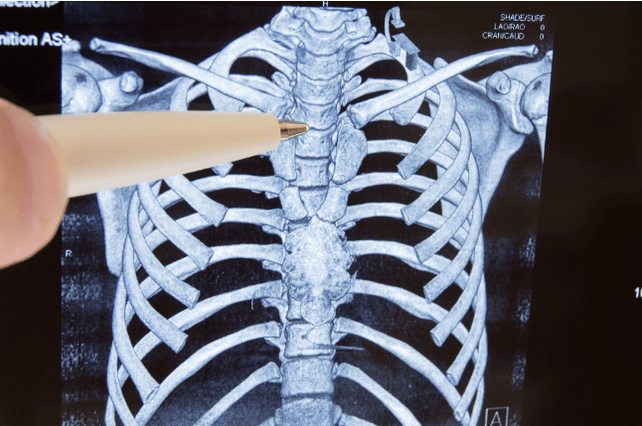Osteochondrosis is an illness of the spine in which the intervertebral discs (and then the bodies of the vertebrae, joints and ligaments) lose their ability to work.

The cause of osteochondrosis is currently regarded as a number of factors that influence the spine during a person's life.An additional risk of osteochondrosis develops the resulting injuries to the spine column and the disturbance of the attitude.Some patients notice the connection of the use of the disease and hypothermia.
In practice it is common to be taken into account
- Cervical osteochondrosis,
- Osteochondrosis of the chest and
- Lumbar spine.
Regardless of this, it should be noted that osteochondrosis is common, which is characterized by damage to several vertebral soda parts at the same time.
The cervical and breast shapes are most common, since these spine departments are subject to the largest loads.
Symptoms of osteochondrosis
In osteochondrosis, patients describe symptoms such as:
- Paroxysmal or shooting pain in the spine affected by osteochondrosis;
- Increased pain after physical exertion and in the morning;
- The neck, arm or leg and in the chest can be given to pain;
- Sensation of crunch when carrying out twisting.
Osteochondrosis is also characterized by symptoms of a neurological nature on the affected side:
- Sub -movement kicks (Parese);
- Unpleasant sensations in the form of goosebumps, tingling (paraesthesia);
- In the case of palpation, the voltage of the muscles that correspond to the affected department is determined.
The disease begins and develops gradually, not sharp.
It is necessary to distinguish the osteochondrosis of the spine of coronary heart disease (in the case of coronary heart disease, the occurrence of pain is not associated with physical activity, but due to secondary factors: cough, longer seat).
Treatment
The same symptoms can be signs of different diseases, and the disease cannot occur according to the textbook.Don't try to be treated yourself - consult your doctor.
Osteochondrosis therapy always requires an integrated approach.During treatment, the attention of doctors such as therapists, rheumatologists, neuropathologists and physiotherapists is necessary.The treatment of osteochondrosis of the spine depends on the localization, the prevailing symptoms and the severity of the disease.
Conservative therapy aims to eliminate pain symptoms and restore the normal function of the spine.
The rational diet for osteochondrosis makes the patient's condition considerably easier and promotes more effective therapy.Read more about the principles of nutrition for osteochondrosis in our separate article.
About 10% of the patients are sent for surgical treatment.The absolute indicator of surgical intervention in osteochondrosis is the occurrence of neurological disorders due to the clamping of the spinal cord itself.
Additional indicators for the surgical treatment of osteochondrosis are the following:
- longer periodic pain attacks;
- increased mobility and suspicion of instability in the spine;
- Ineffectiveness of drug therapy for 3 months;
- Pronounced diseases that prevent the patient from living a full life.
Methods of surgical treatment
Surgical interventions with minimal traumation:
- Preparations for the injection enzyme preparations are administered into the intermediate disk after burning with the aim, the core and fibrous ring of the pane.
- Puncture nucleotomy - survey of the intervertebral disc to remove part of the poison.
- Disha Denervation - A medication is inserted into the intervertebral disc that blocks the sensitivity of the nerve endings.
The remaining methods for the surgical treatment of osteochondrosis of the spine are less gentle.This includes:
- Complete or partially removal of the intervertebral disc or its hernia - this operation aims to reduce the compression symptoms.
- Proshetics of the intervertebral discs - the main task is to fix the affected spine.
Operating methods for the treatment of osteochondrosis of the spine provide a forecast for complete recovery in just 50% of cases.
With timely treatment, the forecast for life is almost always favorable, but the forecast for work ability can vary due to a number of factors.
Exercises for osteochondrosis
Exercise 1.
Tilt your head forward and press on your forehead with woven fingers.Press your fingers exactly on the back of the head and whiskey - left, right.The head counteracts the pressure of the hands and hands - the pressure of the head.Spend 10 seconds.For every movement.
Exercise 2.
Place the tips of four fingers on the forehead against each other, carefully press the entire surface of the palm onto the skin and stretch them with soft traction movements for 10-40 seconds.We can carry out the same stretch in the temple in the longitudinal and transverse direction.The same - on the ear - to stretch it in all directions, especially in the rags.The.They improve blood circulation in areas that are rich in biologically active points.
Exercise 3.
This type of massage improves blood flow in neck arteries and the diet of the brain improves.Set exactly, back is right.Slowly take your head back, help with your hand, press back on the chin and up.You can slowly turn your head left and right.Stay in this position for about a minute.10 seconds are sufficient for children.
Exercise 4.
This exercise improves the functioning of the cervical nervous plexus.Set exactly, back is right.Slowly tend your head forward and try to touch your chest.Place the woven fingers on the back of the head, press forward and up and increase the back of the head.Sit about a minute.You can repeat after 15 minutes.
Exercise 5.
Lift your shoulders up and try to get it lower, free of charge, faster for 15 seconds.Now alternating - one shoulder up, the other is below, also 15 seconds.Pull the cervical spine with your palms.
























